“The idea is to join together to define volcanic wines, establish how to define them and how to sell their unique character,” says Vinora president Desprat.
Not quite in the middle of France, Clermont-Ferrand has always intrigued me. As the Auvergne’s biggest population centre, its situation, at the country’s beating heart, ought to be an advantage. It isn’t. This handsome city – an ancient merger of Clermont and Montferrand – feels strangely cut off from the rest of France and her celebrated infrastructure. There’s no TGV service, it’s by-passed by the major motorways and most international flights from its small airport are only seasonal.
It’s all a far cry from the glory days for the Auvergne, at the turn of the 20th century, when the region, along with the Coteaux d’Auxerrois supplied the majority of wines consumed in the bistros of Paris, taking over as phylloxera scythed its way through the vineyards of Bordeaux. The good times were tragically brief, as the spread of the bug, and then the onset of war, took its toll. Clermont-Ferrand became the home of Michelin – that unlikely fusion of tyres and fine dining – the vines relegated, as cheese became the region’s culinary calling card.
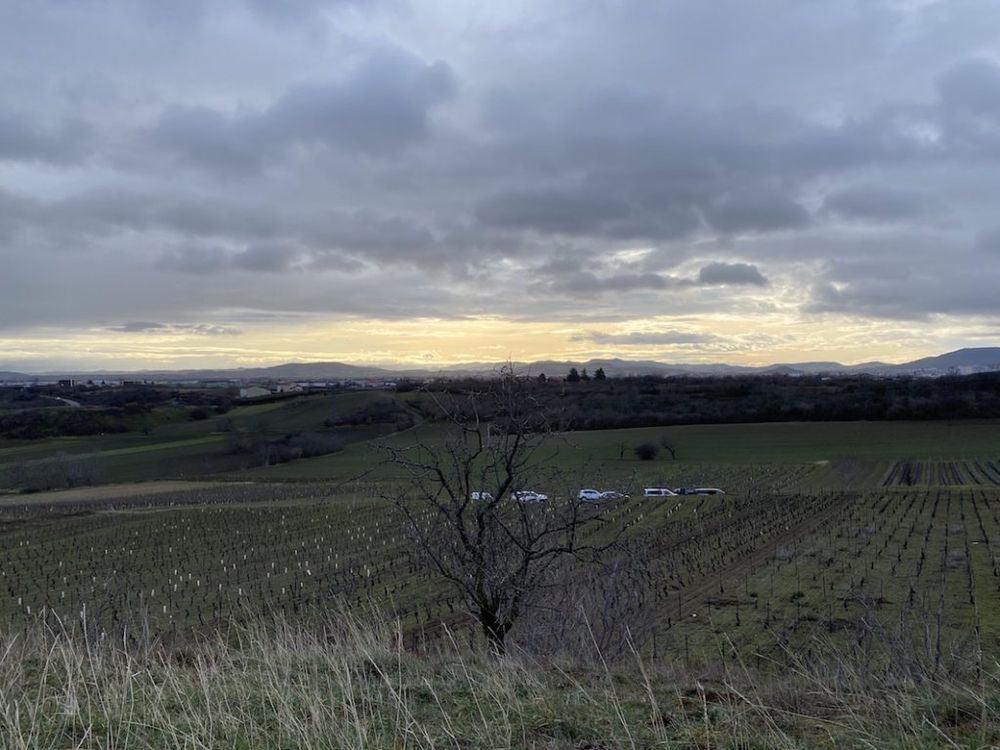
Vineyard in the Auvergne
Introducing ‘Vinora’
Three years ago, a small band of vignerons, led by Pierre Desprat of Desprat Saint Verny, decided it was time to put Auvergne back on the world wine map, establishing Vinora, an association to promote the region’s distinctive volcanic terroir.
“We were just a few dreamers as we set out on this adventure but we have gained the support of an entire region,” says Desprat. “The realisation of all these discussions, which so often went on late into the night, is already a success. It is the recognition of our identity, our land and the volcanic soils that have shaped us”.
What’s most striking about Vinora is the scale of its ambition, however. Rather than merely establish a group to champion its own terroir, it has set the bar higher: to celebrate the volcanic wines of the world, establishing a technical committee to create a list of criteria determining whether a region can lay claim to volcanic terroir, potentially creating specific labelling to highlight the fact.
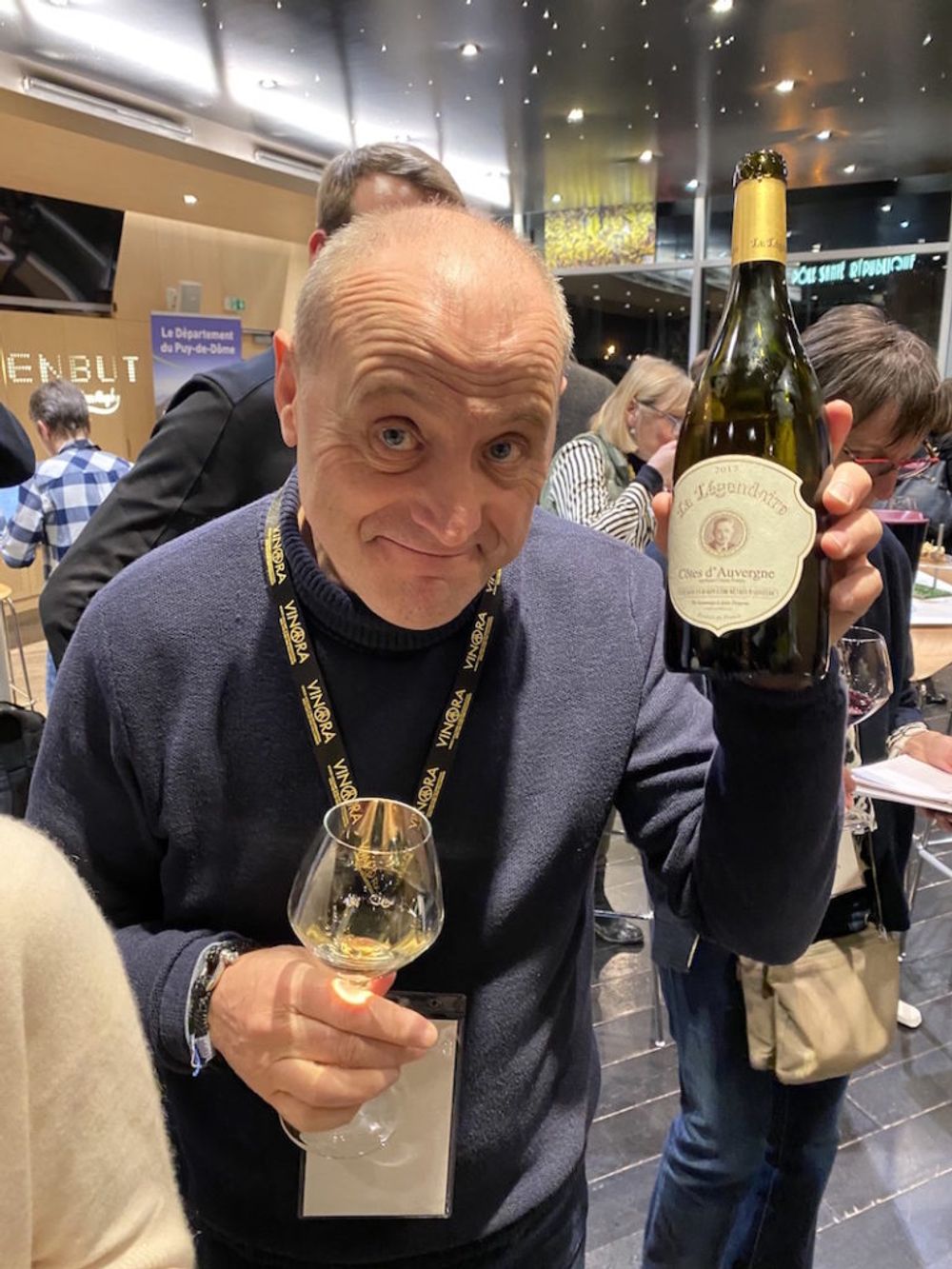
Pierre Desprat, President of Vinora.
“The idea is to join together to celebrate volcanic wines, establish how to define them and how to sell their unique character”, says Desprat.
Vinora was launched with an international trade fair, followed by a three-day public tasting. The event was launched at ‘Vulcania’, a theme park on the outskirts of Clermont-Ferrand celebrating the Chaîne des Puys fault line, inscribed as a UNESCO world heritage site two years ago.
There were more than 30 exhibitors from elsewhere in France, including Beaujolais, Languedoc and Provence, alongside producers from Greece, Italy, Spain, Hungary and Portugal. Among the ‘names’ attending were Hatzidakis, Argyros and Domaine Sigalas of Santorini, Sicily’s Ayunta, Donnafugata and Planeta, Spain’s Campo de Calatrava, Tokaj’s Disnókö, and the Azores Wine Company.
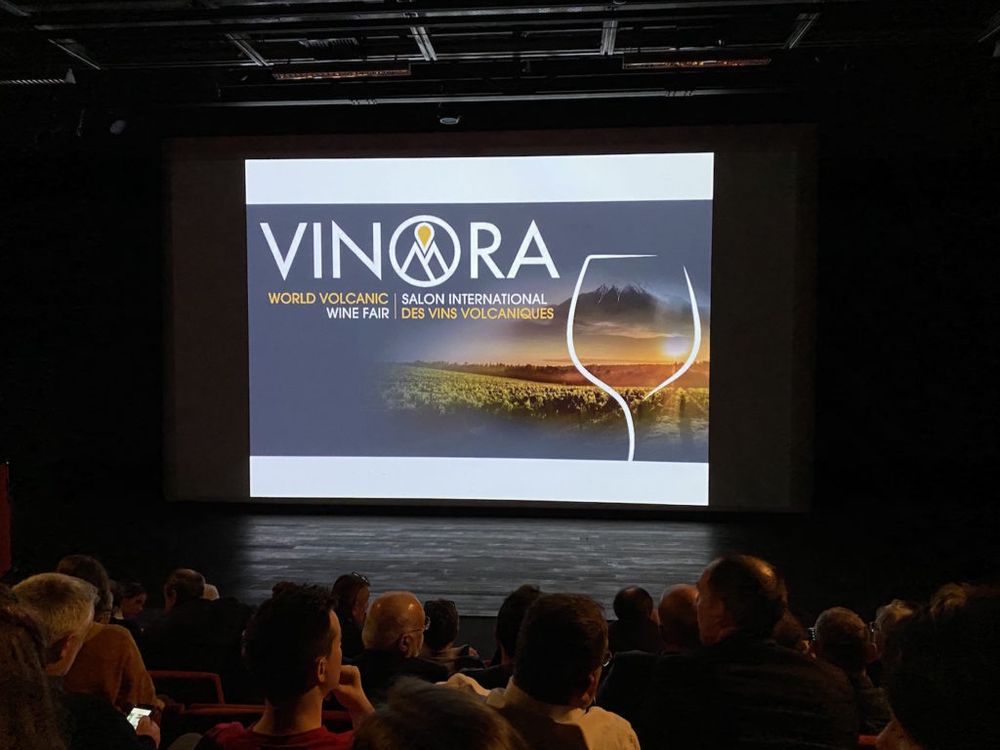
Culminating in masterclasses from geologist Patrick Marcel and author John Szabo MS, attempting to shed some light on the link between volcanic terroir and what we experience in the wines, Szabo talked about “the DNA” of such regions, describing “a family of volcanic wines, all with different characteristics.” Inevitably, there was also discussion around the use of the term ‘minerality’, which, as ever, proved relatively inconclusive.
Côtes d’Auvergne
Although it ranged beyond the Auvergne itself, Vinora’s primary focus was obviously closer to home, showcasing the unique terroir of the 400-hectare Côtes d’Auvergne AOC, its five subregions – Chateaugay, Chanturgue, Madargue, Boudes and Corent (which exclusively produces rosé) – and also the Puy-de-Dôme IGP.
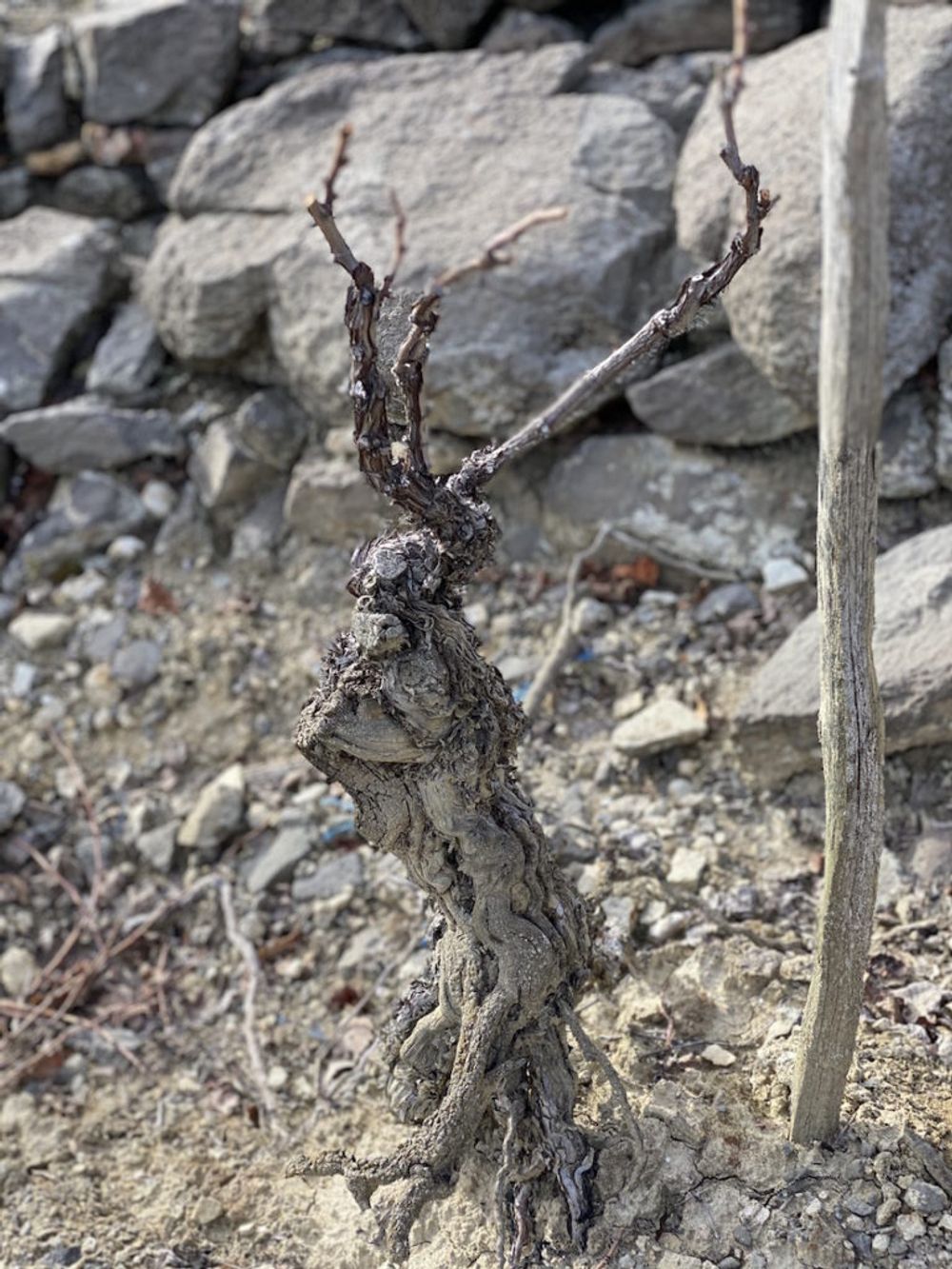
Old vine showing volcanic soils
From a mosaic of soils, much of it from lava flow, including granite, basalt, pumice and clay-limestone, 90 percent of the Côtes d’Auvergne region’s output of 2.2 million bottles is red wine, mostly Gamay and some Pinot Noir, the two often blended together, with the remaining 10 per cent Chardonnay.
With dominance of Paris a distant memory, the wines, now overwhelmingly consumed in the local market, are attractively priced and well worth taking the time to discover. Throw in the region’s savage beauty, invigorating fresh air, and its indulgent cheese-centred comfort food, and the Auvergne presents a beguiling opportunity to get lost in the middle of France.
10 volcanic wines to blow you away
From an impressive selection, here are a few highlights from the Vinora tasting, starting with my top choices from the Auvergne region.
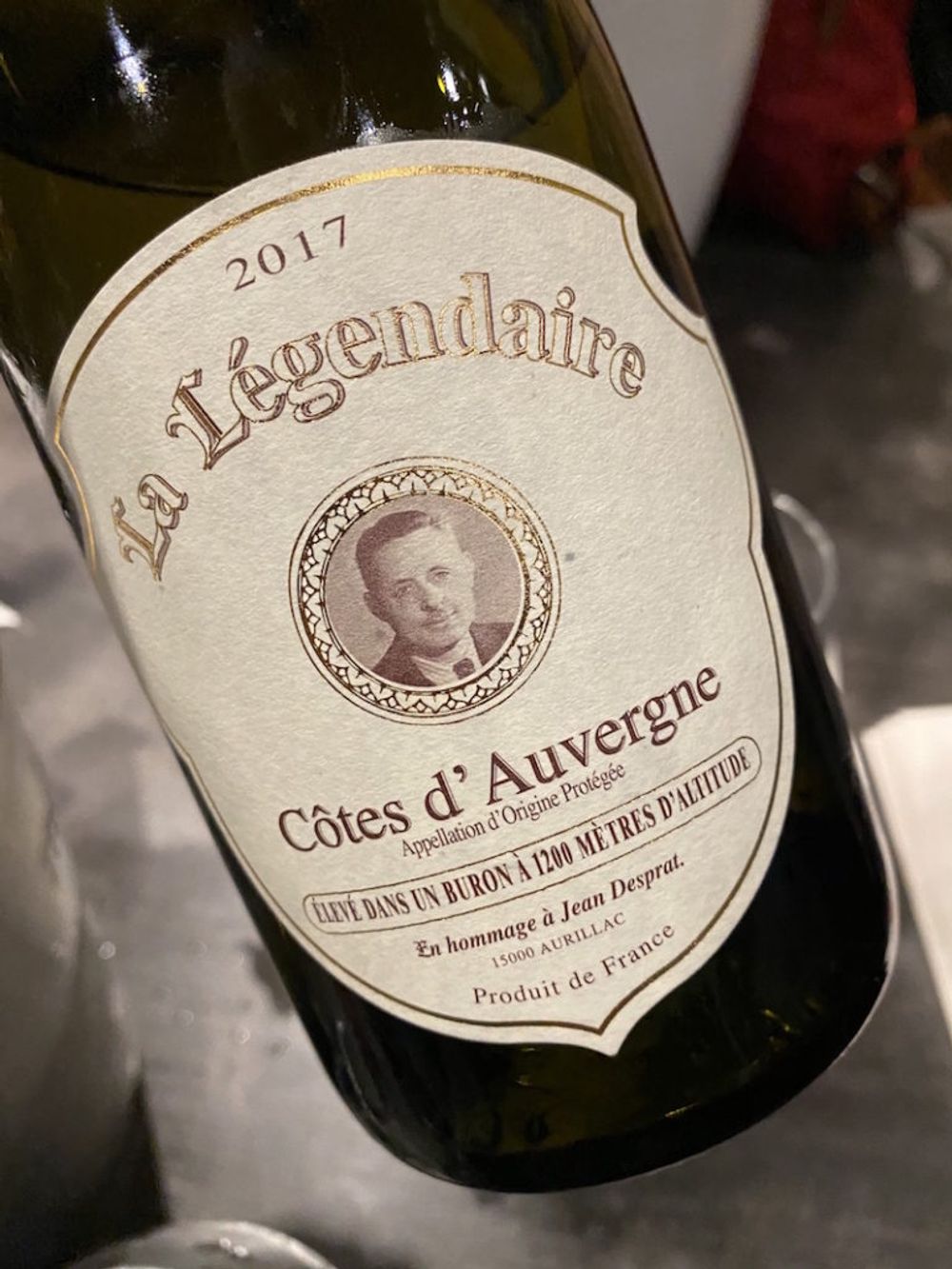
La Légendaire 2017, Desprat Saint-Verny, Côtes d’Auvergne AOC (imported by ABS Wines), Desprat’s top cuvée, Chardonnay matured for 12 months in oak barrels, then bottled aged in a ‘buron’ (mountain shelter) at an altitude of 1,200 metres. Juicy citrus, passion fruit and ripe nectarine, with a glacial purity to the fruit and a rich sumptuous texture, artfully positioned around a firm mineral core.
Heritage Volcanic Chardonnay 2019, Etienne Rachez, Côtes d’Auvergne AOC (not currently in UK), matured in stainless steel with 20% in barrel on fine lees, strikingly fresh, ripe peach and kiwi fruit, very clean, with delicate layers of texture and mouth-puckering acidity.
Corent 2019, Desprat Saint-Verny, Côtes d’Auvergne AOC (imported by ABS Wines), a ‘serious’ rosé, 70% Gamay, 30% Pinot Noir, elegant redcurrant and plump strawberry, nicely balanced, with some tannin evident. An exciting food wine.
Cuvée Tigerno 2018, Arnaud Dupouyet, Puy-de-Dôme IGP (not currently in UK), Gamay from 100-year-old densely planted vines, 50% whole bunch fermentation, matured for 8 months in terracotta amphora, with a total production of just 1,200 bottles. Crunchy, wild berries and spice, textured in the mid-palate and really quite silky, with a gentle salinity.
Nymphéa 2018, Domaine Sauvat, Puy-de-Dôme IGP (not currently in UK), a lovely mineral-driven Pinot Noir, using indigenous yeasts, fermented in used oak, gentle wafts of kirsch and bright red fruits, smooth, silky tannins, with a delicious wild quality.
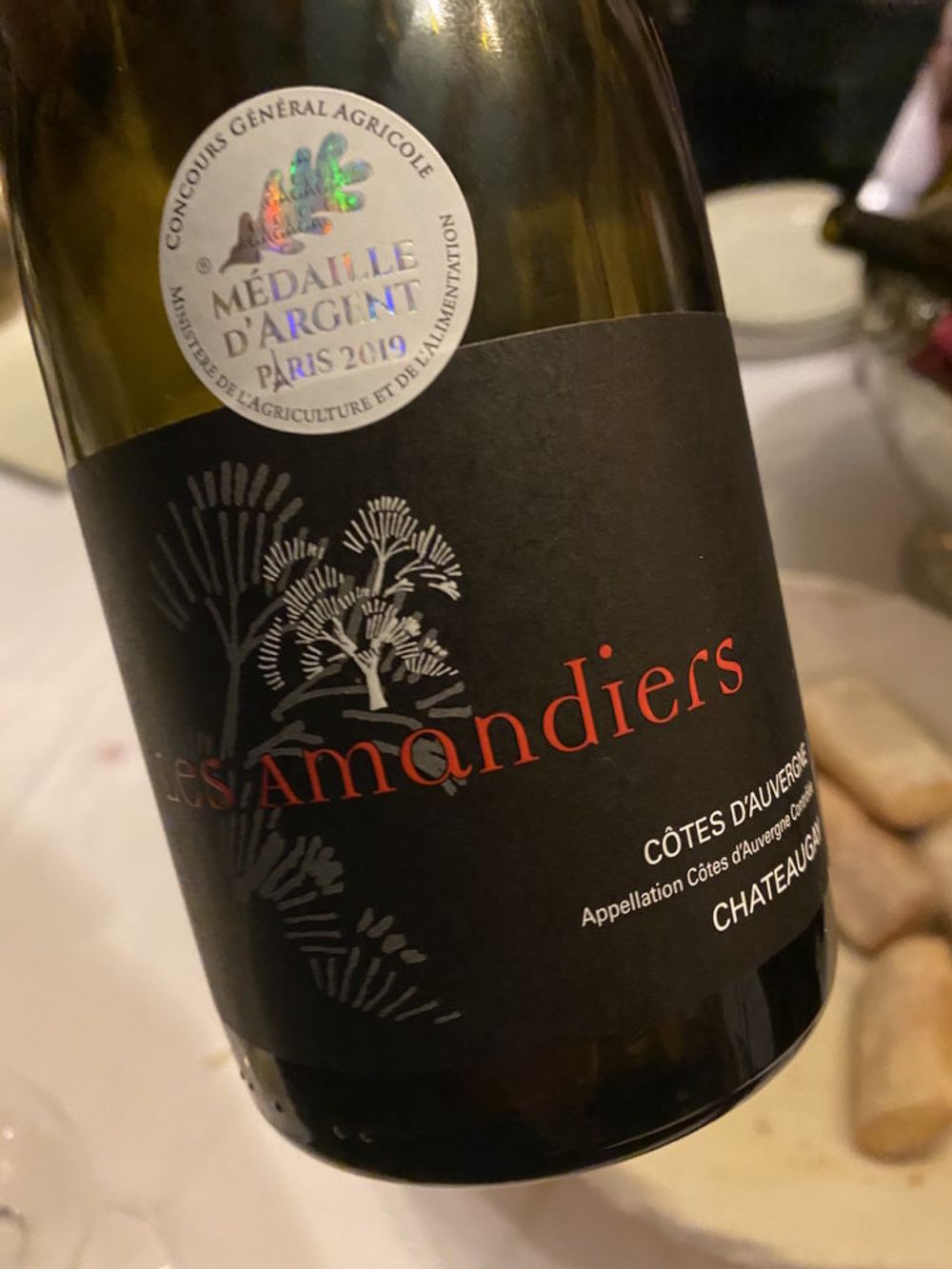
Les Amandiers Rouge 2018, Pierre Goigoux, Côtes d’Auvergne, Châteaugay (not currently in UK), a blend of Gamay and Pinot Noir, with an invigorating sulphurous whiff, nervy, foraged blackberry, morello cherry and a refreshing smack of dark stone.
Ephémère Gamay 2018, Jean-Baptiste Deroche, Puy-de-Dôme IGP (not currently in UK), Deroche is the deputy president of Vinora, 100% Gamay with carbonic maceration then 3 months in used oak, a defined mineral nose, iron filings, with pure cherry/berry fruit and cracked black pepper. Elegant and long.
Hatzidakis ‘Familia’, Santorini 2018 (imported by Eclectic Wines), 100% Assyrtiko from Santorini, invigorating fresh lemon zest, with a glacial purity to the fruit, surprisingly rich and textured, perfectly balanced with beautiful length and mineral depth.
Romain Jambon Brouilly 2016 ‘Les Vieux Ceps’ (not currently in UK), from 70-year-old vines, 2016 was, according to Jambon, “a truly great vintage in Beaujolais”. Perfumed, lifted red fruit and fresh violets, with intensity and a chiselled stone core.
Ayunta, Calderara Sottana 2015 (imported by Graft Wine Company), from winemaker Filippo Mangionewho has old vines on their own roots, on the slopes of Sicily’s Mount Etna. Matured in chestnut barrels for two years, there’s wild blackberry, smoky cherry, iodine and damp hay, with a thrilling nervous energy running through to the long saline finish.
David Kermode is a writer, broadcaster and consultant, with his own website vinosaurus.co.uk








































